What's New
Displaying results 2641 - 2650 of 4914
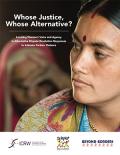
Resource | Publications,
Intimate partner violence against women is a complex, enormously prevalent crime with devastating effects on women’s safety, health, and well being. With one out of three women worldwide experiencing this violence, its magnitude presents complex challenges to justice systems when survivors of violence seek to formally prosecute perpetrators. Further exacerbating this challenge are the varying individual, family, and community ideas about whether and how such violence – considered a private family matter in many cultural and social contexts – should be made public at all, let alone prosecuted.
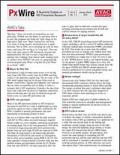
Resource | Publications,
In late 2015, UNAIDS issued long-awaited HIV prevention targets, including a call for a total of 27 million additional voluntary medical male circumcision (VMMC) procedures by 2020. This works out to more than five million procedures per year on average—two million more than have ever been performed. PEPFAR’s peak performance was 2.8 million in a single year. It won’t be close to that in 2017. PEPFAR doesn’t need to, and indeed shouldn’t, pay for the pursuit of global VMMC targets on its own. The Global Fund should ensure that country concept notes fill the space; PEPFAR and UNAIDS should advocate for resource-mobilization in country and global forums; and national governments should step up the pace.

Resource | Fact Sheets,
In March 2016, there were 736 new HIV Ab seropositive individuals reported to the HIV/AIDS & ART Registry of the Philippines. This was 10% higher compared to the same period last year (667). Eighty-nine percent of the cases were asymptomatic at the time of reporting.
Most (97%) were male. The median age was 28 years old (age range: 8 years-63 years). More than half belong to the 25-34 year age group while 27% were youth aged 15-24 years.
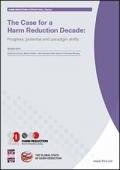
Resource | Publications,
HIV-related deaths and new HIV infections among people who inject drugs could be almost entirely eliminated by 2030 with just a tiny shift in global drug control spending. This is one finding of our report The Case for a Harm Reduction Decade.
The study uses data we have collected over the last 10 years for our biennial Global State of Harm Reduction reports to assess progress and reflect on challenges faced around the world. Using mathematical modelling, it then outlines the potential impact of increased investment in harm reduction on avoidable health-related harms associated with injecting drug use over the next decade and beyond.
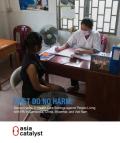
Resource | Publications,
Discrimination in health care settings is one of the foremost barriers preventing people living with HIV and key populations from accessing critical health services. For people living with HIV, disclosure can mean they are denied surgery or treatment. This report summarizes documented experiences of discrimination against people living with HIV in health care settings, and discusses the devastating consequences for those patients in the region who are turned away by health care practitioners because of their status.
Based on 202 interviews conducted by 8 community based organizations in Cambodia, China, Myanmar and Viet Nam, this report documents discriminatory practices against people living with HIV, including involuntary testing, disclosure, segregation, and arbitrary additional expenses for patients due to their HIV status. For women living with HIV, discrimination also extends to sexual and reproductive health services, including advice against pregnancy and, in some cases, sterilization on the advice of doctors due to their HIV status.
This report also documents health care done right. Examples where affected communities, health care providers and governments work together to increase awareness of HIV prevention, illustrate best practices to reduce discrimination and ensure the right to health for all.

Resource | Publications,
The preparation of the 2015 Global AIDS Response Progress Report (GARPR) for Palau was facilitated and compiled by the Ministry of Health (MoH), in consultation with relevant government agencies and one non-government organization (NGO) partner involved in the response to HIV/AIDS and STIs in Palau, and with technical assistance from a UNAIDS consultant assigned to this task.

Resource | Publications,
Epidemiological data continues to show the HIV/AIDS epidemic in the Maldives may be characterized as low prevalence but high vulnerability, risk and epidemic potential. As of 2015, 23 HIV positive cases had been reported among Maldivians, among which 12 have died. In contrast, by 2015, 356 HIV positive cases were found among expatriates during pre-employment screening, and thus were not granted work permits. 9 Maldivians (and 1 expatriate until his contract concluded in 2014) continue to receive antiretroviral treatment provided by the Maldivian government.
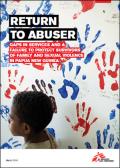
Resource | Publications,
A report from Médecins Sans Frontières (MSF) uncovers the gaps in services and systems in Papua New Guinea, trapping women and children in cycles of severe family and sexual violence. “Return to Abuser” details how a dire lack of protection mechanisms, a weak justice system and a culture of impunity endanger the health and lives of patients even if they manage to reach medical care.
The report includes comprehensive data from more than 3,000 survivors of family and sexual violence that MSF treated in 2014-15 in its two projects in both rural Tari, in Hela Province, and the capital, Port Moresby. It reveals the repeated, often escalating, violence women and children endure in the places they should be safe, their homes and communities.
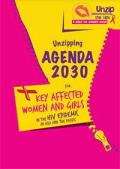
Resource | Publications,
The purpose of this brief is to set out what “Transforming our world: the 2030 Agenda for Sustainable Development” means for Key Affected Women and Girls (KAWG) in Asia and the Pacific.
The brief looks at the relevance of Agenda 2030 to KAWG in the region. It outlines ways in which KAWG can advocate for issues pertaining to them, by making use of the follow-up and review processes for Agenda 2030; it also describes other opportunities for monitoring and tracking progress.

Resource | Publications,
Under the leadership of the Government of Bangladesh (GOB), the National AIDS/STD Programme (NASP) and UNAIDS in liaison with civil society stakeholders started the process of the Investment Case for Bangladesh to enhance the mobilization of resources (domestic and external donor) to end AIDS BY 2030 through Fast-Track strategies. The Investment Case makes an effort to outline how to maximize efficient use of resources, based on current evidence, by re-visiting the strategic directions in prevention efforts to fast track and intensify. The process included several review sessions facilitated by the Ministry of Health and Family Welfare, engaging researchers, civil society and government.





